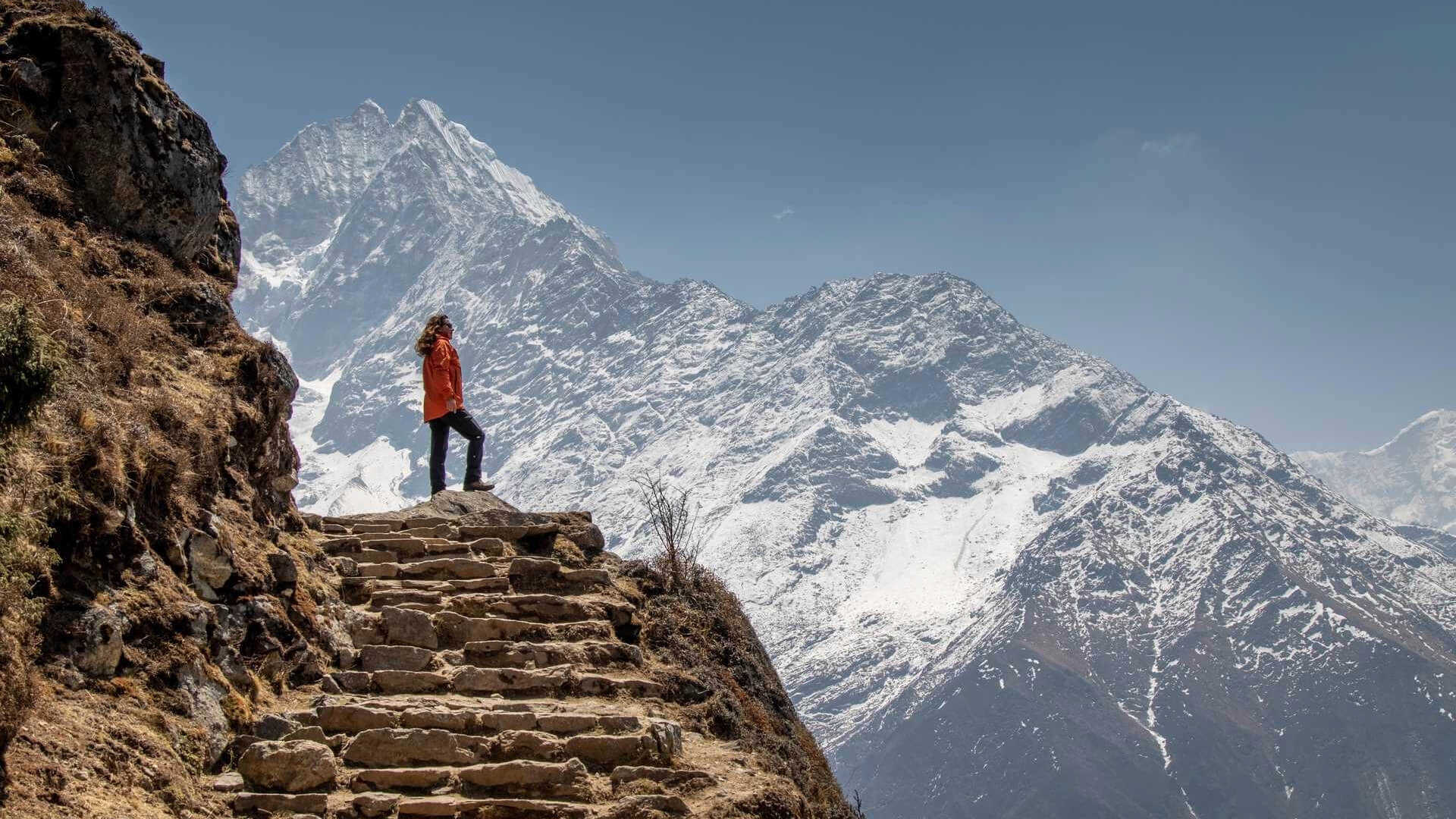Top 5 Differences Between Everest Base Camp and Everest Summit
Climbing Mount Everest and trekking to Everest Base Camp are
about as similar as scuba diving and paddleboarding. The former, in both cases,
requires the right equipment, training and support while the latter is
achievable to most people with a little effort and the right mindset. Saying
that, we thought it would be interesting to drill down into how exactly they
differ.
Located in Nepal, Mount Everest is the tallest mountain in
the world at 8,849m high, placing it as one of the world’s 7 summits (the tallest mountains on each continent) and 14 peaks over 8,000m tall.
At 5,364m, Everest Base Camp is located on the south side of Mount Everest and
is one of the most popular trekking destinations in the Himalayas.
Embarking on an Everest adventure is a bucket list
experience for many, but there is a humongous difference between trekking to
the base of Everest and summiting this behemoth. Budding adventurers have a
choice of route to Everest Base Camp, with some following a more scenic route,
such as the Gokyo Lakes Everest Base Camp trek, while others summit
nearby high peaks such as Mera Peak and Island Peak during their
walk to Everest Base Camp. In fact, Kandoo are one of the few companies that
actually take you into Base Camp as special permission is needed unless you are
attempting a summit expedition.
In this post, we’ll take a look at the main differences
between trekking to Everest Base Camp and climbing to the summit of Mount
Everest as well as what is needed to prepare for each.
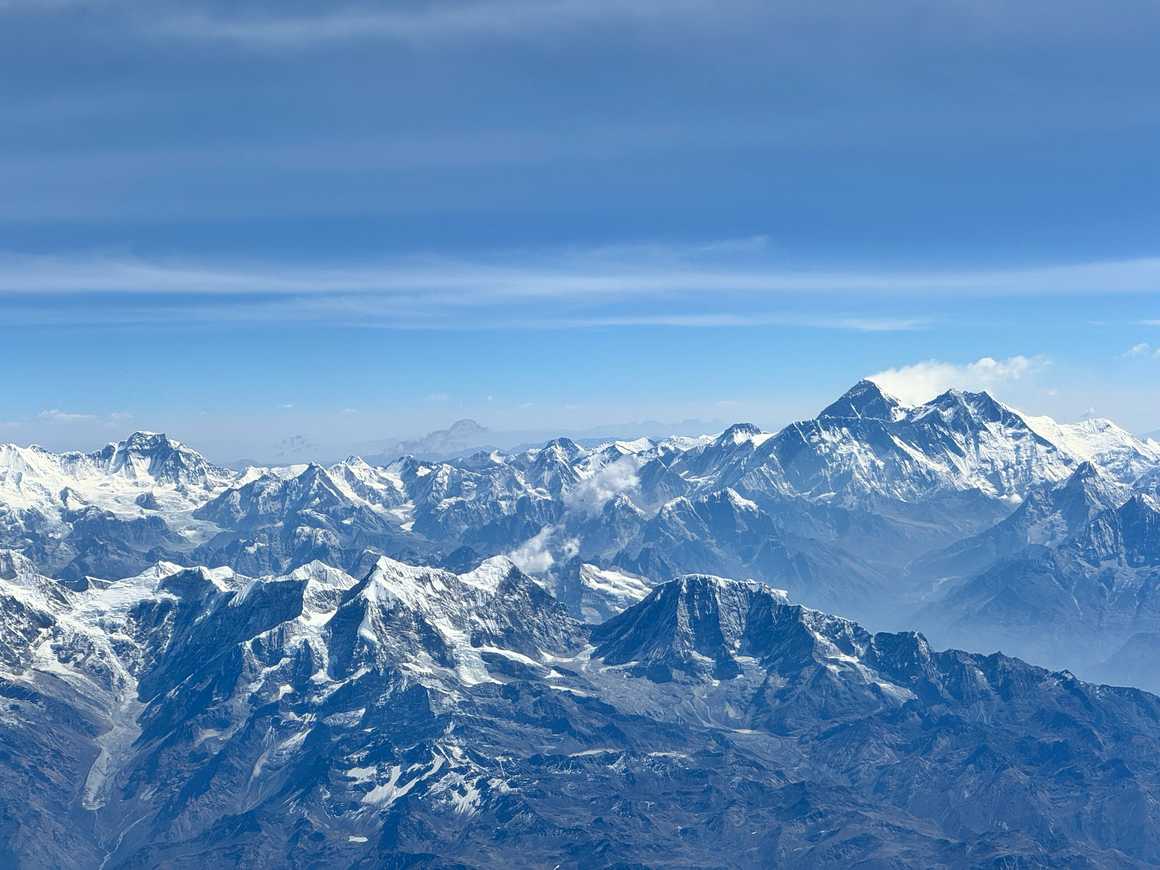
1. Altitude
There are officially two base camps on Mount Everest – one
on the south side of the mountain in Nepal and one on the north side in Tibet,
but the Everest Base Camp you will have heard of is the south base camp.
Located on the south side of the mountain, Mount Everest Base Camp sits at
5,364m above sea level and trekking here is actually very achievable.
One of the main concerns trekkers have before booking one of
our Everest Base Camp treks is acute mountain sickness (AMS), or
altitude sickness, which can occur after reaching heights above 2,400m.
Symptoms of altitude sickness include headaches and nausea, making it more
difficult to climb as you get closer to base camp though Kandoo Adventure’s
itineraries account for resting breaks to allow you plenty of time to
acclimatise to the altitude and offering you the best possible chance of
success.
If you are worried about the altitude at base camp or acute
mountain sickness (AMS) read our guide on avoiding altitude sickness in
Nepal.
How High is Mount Everest Summit?
Mount Everest is a mammoth 8,849m and this is considered the
tallest point on Earth.
The upper reaches of the mountain are found in what is known
in the mountaineering community as the “death zone” which is typically
identified as the mountain terrain 8,000m above sea level. At these altitudes,
oxygen levels are insufficient to sustain human life for an extended period of
time and climbers are exposed to stronger UV radiation, freezing temperatures and
extreme weather which pose other dangers.
Most climbers are not accustomed to the high altitude and
low oxygen levels on Everest and rely on supplemental oxygen they bring along. Mountaineers
who spend long periods in this region can develop several life-threatening
illnesses including acute mountain sickness (AMS), high altitude pulmonary
edema (HAPE) or high altitude cerebral edema (HACE), though guides on Everest
are trained to closely monitor the health of climbers and will take immediate
action if needed.
2. Physical Requirements
The Everest Base Camp trek has become one of the most
popular hiking trails of all time, attracting tens of thousands of visitors
every year because it doesn’t qualify as a technical climb and requires no real
mountaineering skills.
With this in mind, it’s still important to consider that the
route is by no means for everyone. You’ll be trekking 5-6 hours and up to
1,500m of ascent each day on steep and rocky terrain in places, so it’s advised
that you have a good level of fitness before embarking on the trek.
It’s also worth noting that you’ll need to be fit enough to
carry your gear such as day rucksacks (no more than 5kg) and 2 litres of water
each day. The porters will carry your main equipment from 10-15kg which will
make the journey easier for you.
As well testing your physical fitness, the trek to Everest
Base Camp will challenge your mental stamina. There may be days you feel like
giving up which is why keeping a positive mindset is vital to pushing your body
past what it thinks is its limit and reaching the end goal.
For more information on how to prepare your body for the
trek read our post on training to trek Everest Base Camp as well as our
helpful articles on training ideas of Everest Base Camp in the UK and training
ideas for Everest Base Camp in the US.
How Hard is It to Climb Mount Everest?
In stark contrast, climbing Everest Summit is a very
challenging endeavour that requires a high level of fitness, experience and
determination. The climb is extremely demanding, and climbers need to be in
excellent physical condition to handle challenges posed by the mountain.
For success on Everest, you need to have a high level of
climbing fitness and aerobic capability and strength. You should start training
at least 9-12 months in advance and it’s vital that your training closely
simulates what you will be doing on the mountain. Traditional gym workouts or
general fitness plans aren’t targeted enough. You need to emulate long physical
days (10hrs+) in the mountains, back-to-back.
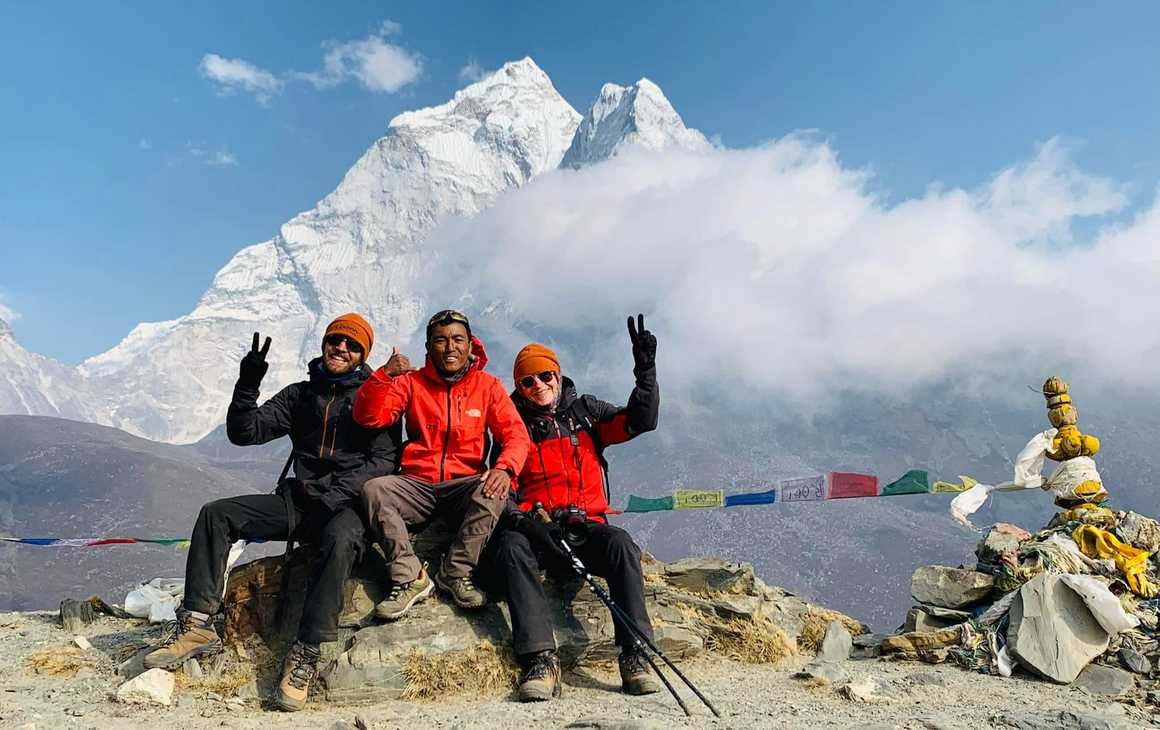
3. Technicality
As we touched on above, the trek to Everest Base Camp is not
a technical climb and therefore requires no real mountaineering skills, a fact
that makes it wonderfully achievable for many. While the route is both
physically and mentally demanding, it is effectively a long trek at altitude and
anyone with a good level of fitness and mental resilience can complete it.
Though you won’t need any special technical gear or
equipment to trek to Everest Base Camp, you will need a reliable pair of
walking boots with good ankle support, suitable trekking clothing and headgear
and a comfortable waterproof backpack. If you book your Everest Base Camp trek
with us and you decide to rent a sleeping bag, the team at Kandoo can help to organise
this for you before your trek.
Check out our Nepal packing list for a detailed list
of everything you need to trek Everest Base Camp.
Mount Everest Summit
While not considered the most technical of the 14 ‘eight
thousanders’, you will encounter obstacles and interruptions that you probably
haven’t faced before. Even the best planned expeditions encounter stumbling
blocks, and the unpredictability of Everest can be difficult to anticipate. It’s
not a challenge that should be taken lightly and even highly experienced
climbers face serious challenges and risks when attempting to reach the summit
of Mount Everest due to its extreme altitude, unpredictable weather and
treacherous terrain.
Before you consider embarking on a Mount Everest
summit expedition, you must gain high altitude expedition experience and you
must possess a solid technical mountaineering skillset, including familiarity
with crampon and ice axe technique, glacier travel, fixed lines, self-arrest,
crevasse rescue, camping in severe weather, knots, anchors and other rope work. In fact, Nepal climbing permit rules state that if you want to
attempt the climb to the summit of Mount Everest, you must be an experienced
mountaineer, have a certificate of physical fitness and have already climbed a
Nepali peak of at least 6,000m.
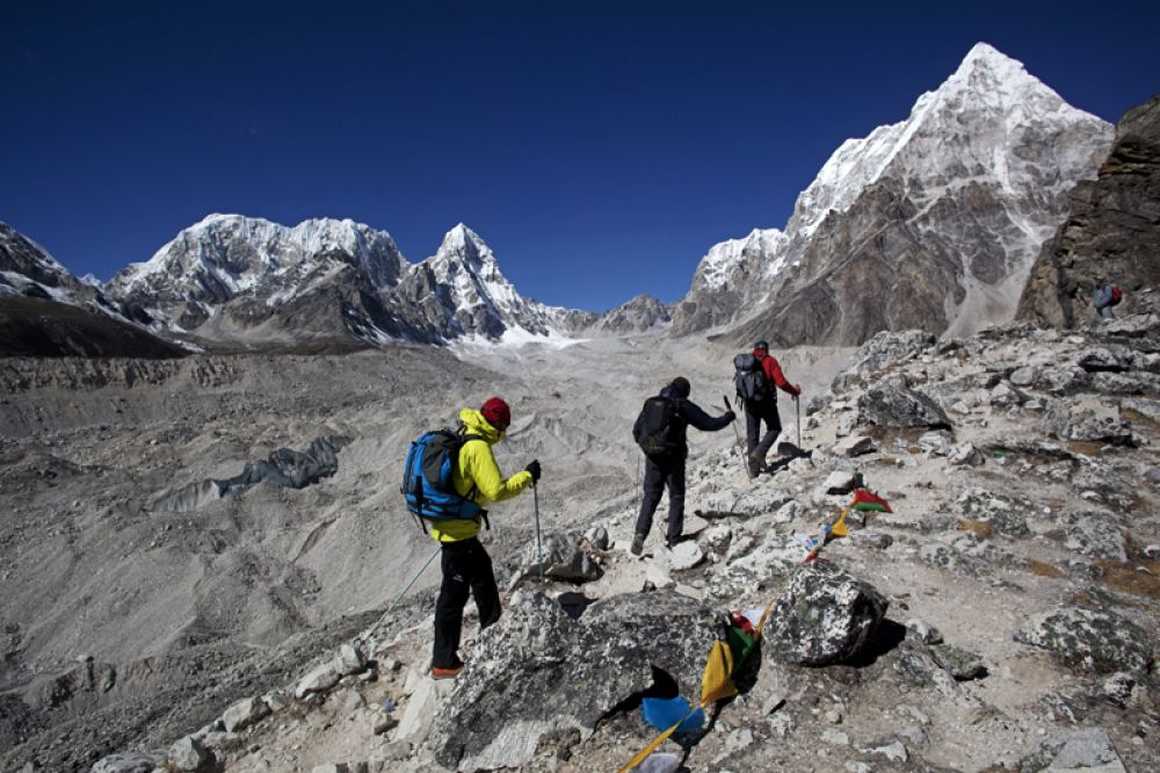
4. Duration
After flying into Lukla, your 65km trek to Everest Base Camp
will begin, a 130km round-trip in total. You should take into consideration
that this may be longer if you book onto one of our Everest Base Camp extension
trips.
On average the duration of the Everest Base Camp trek takes
between 12-15 days, but this can vary depending on a number of factors
including the travel operator, acclimatisation days to adjust to the high
altitude, weather conditions and individual fitness levels.
At Kandoo Adventures, for example, we include multiple
acclimatisation days with each of our Everest Base Camp treks which we feel is
very important for the welfare and comfort of our clients.
How Long to Climb Everest?
The time required to climb Mount Everest varies, but
typically it takes around two months (60-65 days) to complete the ascent, but
this may vary depending on the weather, the climber’s physical condition and
other factors. This includes time for acclimatisation, rest days and the actual
ascent to the summit.
Mountaineers typically take several weeks acclimatising at
various camps along the route to avoid altitude sickness and prepare their
bodies for the extreme conditions they will face at higher altitudes. The
actual ascent from the highest camp to the summit can take 9 to 18 hours,
depending on the climber’s speed and stamina.
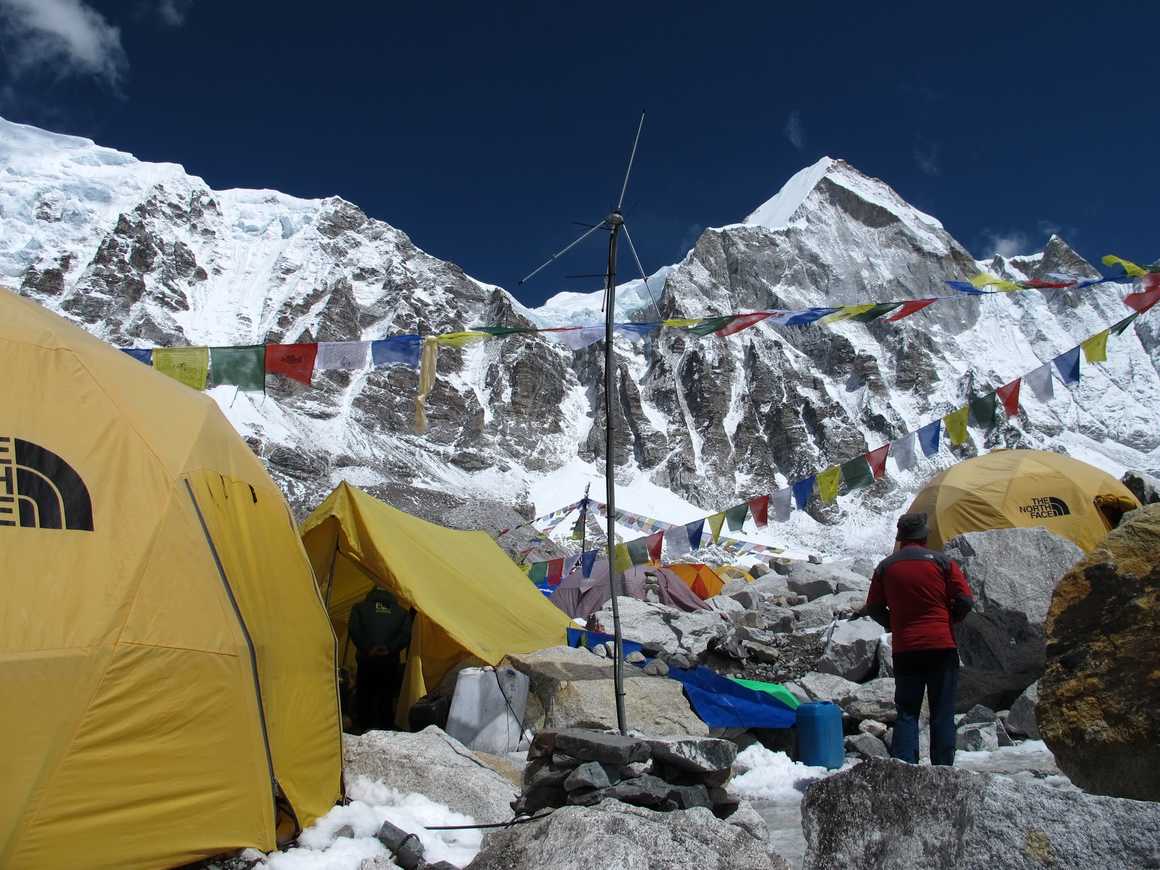
5. Cost
In our experience, the cost of trekking to Everest Base Camp
can vary widely depending on factors like the length of the trek, the season
and the agency you choose. The cost to trek Everest Base Camp usually includes
accommodation and food, permits and insurance, guides and porters and flights.
At Kandoo Adventures we currently operate 7 different trips
to Everest Base Camp ranging from £1,199 to £2,749. You will need to organise
your own flights to Kathmandu, and we recommend bringing a spending budget of
between £400-£650 ($500-$800) depending on the length of the trip and your meal
preferences on top of your tips, to give you enough money for souvenirs and
treats.
How Much Does It Cost to Climb Mount Everest?
Expeditions to the summit of Mount Everest can cost between
£35,000 ($44,200) and £100,000 ($126,500), depending on many factors.
The cost to climb Everest includes permits and visas,
insurance, guides, tips, accommodation, flights, food and oxygen. The cost of
oxygen alone is around £400 or $500 per bottle and at least five bottles will
be needed. You will also need a mask and regulator which are another £400 or
$500 each. Sherpas will need oxygen but as they require less, this can cost
around £1,600 or $2,000.
For further information, read our blog on how much it
actually costs to climb Mount Everest.
Popular Everest Base Camp Treks:
- Everest Base Camp – a classic
15-day trek to Everest Base Camp
- Everest Base Camp Lite – a 13-day
trek with the same service and guides as the classic Everest Base Camp but
without private airport transfer and hotels in Kathmandu
- Everest Base Camp Overnight – a
15-day trek to Everest Base Camp with overnight stay and walk to the foot of
the Khumbu Icefall
- Everest Base Camp and Island Peak
– a challenging 21-day trek to Everest Base Camp and climb to Island Peak
- Gokyo Lakes – a tough 18-day trek
to Everest Base Camp, climb to Gokyo Ri and crossing of the Cho La pass
- Three Passes – a challenging
21-day trek to Everest Base Camp visiting the Renjo La pass, Cho La pass and
Kongma La pass
- Ultimate Nepal – a challenging
19-day trek to Everest Base Camp including a day of cultural immersion in
Kathmandu and exploration of the Nepalese jungle at Chitwan










